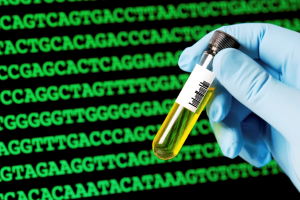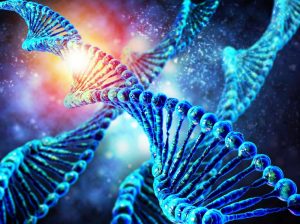
The history of the Celtic people is long and storied, as fortune, famine, and the hands of fate have guided their steps across the globe for millennium. Thus, there are many whose veins run red with Celtic blood, and may yet not know. Still, there are even more of known Celtic heritage who wish to track that blood back as far as they can.
It is no surprise, then, that genealogy is an area of interest for many people with Celtic roots. Today, with the commercial availability of direct-to-consumer DNA ancestry kits – like those available from Ancestry.com or 23andMe – finding out where you come from seems easier than ever.
Or is it?
The abundance of commercially-available DNA testing kits now on the market should not be considered an easy answer to all your heredity questions, however. According to genetics and genealogy experts who spoke to Celtic Life International, these services can only offer so much.
Take for example a recent story published by the Canadian Broadcasting Corporation (CBC), where a reporter and her identical twin took five different direct-to-consumer ancestry kits, and got different results between them. Charlsie Agro of CBC’s Marketplace program, along with her sister Carly, submitted genetic material to AncestryDNA, MyHeritage, 23andMe, FamilyTreeDNA and Living DNA. Having identical DNA, they should have expected identical results.
Instead, 23andMe showed that Charlsie had one percent more Italian heritage than Carly, three per cent more Eastern European heritage, and expressed a fraction of French and German DNA where her sister had none.
How is it possible for two genetically-identical siblings to differ even slightly in their ancestry results? This outcome is a little less shocking when you learn that the methodology of these types of kits are more of an estimation than a comprehensive list detailing your own particular gene pool.
“A lot of the information is looking at a reference population,” says Nicole Snow, a genetic counsellor with the IWK Children’s Health Centre in Halifax, Nova Scotia. Snow explains that when you have one of these direct-to-consumer tests done, your DNA is being checked against the company’s own private genetic database, mostly made up of other people who have taken their test. A proprietary algorithm then decides how much of your genetic make-up likely came from different population groups – and that can only take you so far.

“There are going to be some groups that have a smaller reference population,” says Snow. “European ancestry tends to be very well-represented, as compared to some other ancestries. If someone is buying this testing, and they have a small amount of an ancestry that is not well-represented in that database, they might miss out on that diversity within themselves.”
“People can get very excited and carried away by their ethnicity results, but these can be misleading,” adds Rosaleen Underwood, a genealogist with Accredited Genealogists Ireland, via email. “A typical Irish result could give a mix of Scandinavian, Western European, and Germanic as well as Celtic, maybe Iberian, and maybe even some Mediterranean – all of which is easily explained if you know your Irish history. For example, some of the earliest settlers in the south-west of Ireland are believed to have come from Spain.”
Thus, a result that says your background is 50 per cent Scottish, or Irish, or of any ethnicity really, doesn’t tell you a lot.
It might tell you even less if you are investigating your lineage for medical reasons.
As a genetic counsellor, Snow’s job is to identify genetic risk factors and use clinical testing methods to determine the cause or potential risk of any hereditary medical concerns, using a mode called Next Generation Sequencing.
“It is a form of genetic testing that spells-out a number of different genes at one time, and makes sure that there are no spelling mistakes in that gene, so to speak. We would order a panel of genes – that might be hundreds of genes that are all associated with something like epilepsy – and look to see if there is a spelling mistake in any of those genes that might explain a child’s epileptic condition.”
Make no mistake, the science of genetics has reached an all-time high in recent years. But Snow says that when it comes to the usefulness of that amazing technology, human understanding is where the buck stutters.
“The technology has improved faster than we can interpret the data that we are getting back. There are still genes whose function we still do not fully understand yet, or perhaps they have never been associated with human disease before. As good as the technology is, it is our knowledge that is the driving force for us to be able to make a diagnosis.”
In most cases, the ability to properly decipher results from direct-to-consumer kits independently is nearly impossible. Snow notes that many companies keep their databases private.
“Not only do we not know how accurate the testing is in the first place, from a direct-to-consumer database, but even if it is accurate, we still don’t know how valid those results. It depends on the direct-to-consumer test itself, but with a test like 23andMe, there are specific mutations that they test for.
“For example, brca1 and brca2, which are the two most well-known breast cancer-associated genes; a direct-to-consumer test is not actually spelling out the entire gene and looking for mutations in that gene – it is just looking for some well-described mutations.”
In short, these tests aren’t looking for all the possible warning signs that you might have breast cancer – only the most common. A study from the genetic information company Invitae recently showed that 88 per cent of samples from families with a background of hereditary cancer would have had warning signs go unnoticed by most commercial SNP testing, and worse, that about 50 per cent positive results from these tests were determined to be false positives when scrutinized under clinical testing.
“Getting a negative result from that is not reassuring to me,” continues Snow. “If you have a strong family history of cancer, or you yourself had a young onset of cancer, there might be something else going on that type of testing is missing.
“I do worry about people getting a false sense of reassurance when they do a direct-to-consumer test, because they are not getting the full picture.”
Most of these companies will explain their methodology and their findings if you read through, but most consumers aren’t doing that.
“If you look at 23andMe, they do have an explanation if you click through all of your results,” says Snow. “However, we live in a world where we run into terms and conditions daily, and we automatically skip over lots of extra information without reading. When it comes to genetic testing, I really urge people to read the fine print.”

“Genetic testing is not straight-forward, it is not an easy yes-or-no answer.”
“People still want short cuts, especially as we have become used to almost instant results with computers,” notes Underwood. “Genealogy doesn’t work like that.”
How does it work, then? As it turns out, a lot like it did in the old days; with quill and parchment, and a lot of research.
Lynn Brady is the resident genealogist with The Glasnevin Trust, a museum associated with Glasnevin Cemetery in Dublin. She admittedly doesn’t know much about genetic science, as she has been practicing genealogy the old-fashioned way since she started.
“Our cemetery opened in 1832, and we have burial records going back to that year,” says Brady over the phone from her office in Dublin. “My job is to help people trace their families that are buried here. We could have three, four, sometimes five generations of the same family buried in the one grave, and people would not be aware of that. That is why they come in to me, and I go through the records and see what I can find for them.
“There’s nothing science-based at all. It is just their burial registers.”
Over 1.6 million folks rest at Glasnevin, and each one of them has a paper record detailing the person who owns the grave, who is buried there, their age, address, place of death, date of death, gender, religion, occupation, marital status, cause of death, and even the name of the person who arranged the funeral. This even holds true for people buried there today – both electronically on a computer database, and on the same paper register they have used for centuries.
For those seeking their Celtic roots, these jotted notes are far more useful than a mail-away genetics test, according to Brady.
“You literally start with yourself, and work backwards, generation by generation. I always tell people, the first thing is to talk with your family members. Get all the stories out of them. These are things that will have been handed down. Once you start your family research, you uncover the truth to those tales.”
As direct-to-consumer kits become more popular, Brady has had to disappoint many amateur genealogists who come to her certain that they must have a relative buried at Glasnevin Cemetery, which, she points out, was the only Catholic facility of its kind in the region for 100 years.
“I see people coming in, telling me that they have had their DNA test done. Sometimes it confuses people, and sometimes people will come to me and say they definitely have Dublin ancestors, and then we will get to the point where I can’t find anything. If anybody died that was living in Dublin in those hundred years, then there is a good probability that they are buried here at Glasnevin. So, if I don’t find anything, they can be disappointed because of what they had been told with their DNA results.
“People presume that, once they are told that they have, say, 50 per cent Irish blood in them, that I am going to be able to automatically find their relatives. That obviously isn’t the case, because they don’t have enough information. I can point them in a few different directions, but especially when you go pre-registration, which is 1864, you need to know where in Ireland the person came from, in order to be able to look up baptism and marriage records.”
So, does that mean that direct-to-consumer ancestry kits are bogus, and shouldn’t be bothered with? Not necessarily.
What is more important, our experts agree, is in understanding what these tests are good at, and what their limits are. And, if nothing else, the popularity of these tests is getting more people interested in genealogy that might not have otherwise.
“I have had people that wouldn’t have come to me, but did because they had their DNA testing done,” says Brady. “Sometimes, I have been able to help them, and sometimes I haven’t. I think a lot of people that get the test done don’t actually understand the results, or how it works, but they are still asking questions.”
“I see amateur genealogists all the time,” adds Snow. “There might be people who would not be interested in going through archives and being a genealogist from that perspective, but might be interested to spit in a tube and get their result back.”
Of course, if your genealogical journey involves unknown parentage, DNA tests are great for that.
“For adoption cases, they can be fantastic,” says Underwood. “Where the written records are poor, they can be very helpful, and give positive links with suspected families and relations.”
And even though the possibility of false-positives appears to exist, any positive result you get on a direct-to-consumer test is still worth investigating with a clinical lab as it still could uncover a yet-to-be-detected ailment.
“I don’t tell people, ‘absolutely do not take this test,’” says Snow. “I think you just need to be informed about what it is going to offer, and that there are certainly limitations.”
 If you do want to take a direct-to-consumer test, Snow urges being a smart shopper, and look for companies that employ genetic counsellors like herself, who share their databases with the genetics community at large, and are up-front about what exactly they can and will do with your information.
If you do want to take a direct-to-consumer test, Snow urges being a smart shopper, and look for companies that employ genetic counsellors like herself, who share their databases with the genetics community at large, and are up-front about what exactly they can and will do with your information.
“Some of the companies will sell consumer DNA information to other companies,” warns Snow. “At that point, you are no longer the sole owner of your DNA anymore. Try to think about what the actual information that you want is, then, rigorously research the various different companies. There are a lot of different companies offering a lot of different things right now.”
You might also want to prepare for the very real possibility that your test results could include some unexpected and potentially-upsetting details. You could discover that your parents aren’t your parents, or that you have a secret half-sibling you never knew about. According to an article by Scottish Field, unexpected DNA results could even uproot long-held titles for people belonging to Scottish clans.
“In Ireland, there was always a great tradition of fosterage going back centuries, if not millennia, where local kings fostered each others’ sons as hostages,” adds Underwood. “This was continued until a generation or two ago as unofficial fosterage among families where a childless couple would take in a relation’s child, especially if one of the parents had recently died, who would later inherit their farm. Very often, the neighbours would know more about the parentage of the children, legitimate or otherwise, than the children themselves. But they would be the last to know, as no one would ever tell them.”
“Although you are the one consenting to getting that information, it might have big implications for people in your family,” adds Snow.
No matter which company you may get your DNA tested with, and no matter the reason you may be exploring your heritage with them, all of our experts agree on one thing – don’t just leave it at that.
“At least have the recognition that it is not the full picture,” says Snow.
“Get it done, by all means, but don’t take it as gospel truth,” says Brady. “It is more of a guide than actual fact, but it is one of many tools, and not the only tool.”
“Get a DNA test but stick with the old reliables of the paper trail and talking to the family,” says Underwood. “And read up on your history from all angles. We are all mongrels somewhere back along the line and that is one of the things that makes us all so interesting.”




















Leave a Comment